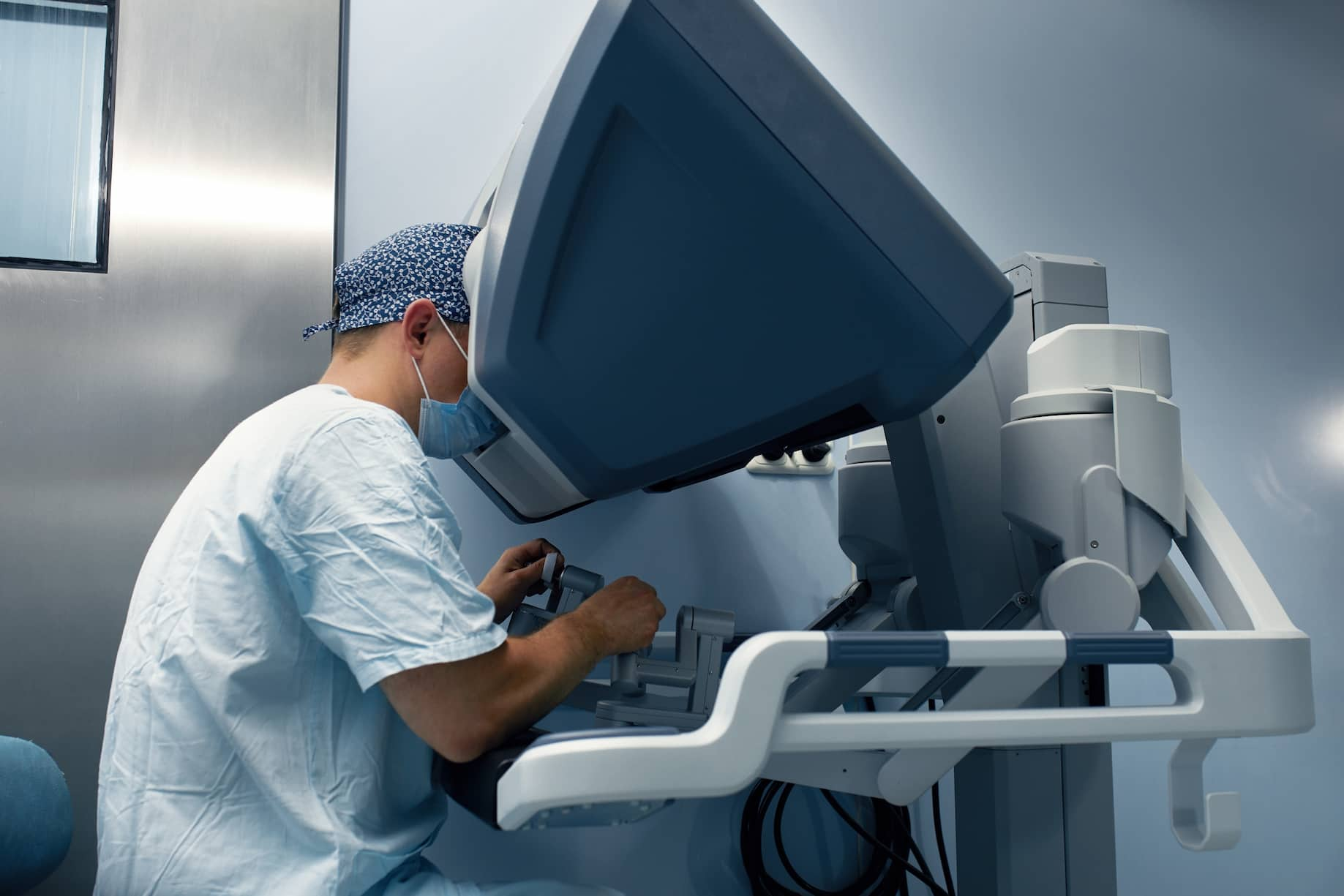
Robotics in Pediatric Surgery
The field of pediatric surgery has seen a great deal of progress in recent years, with advancements in technology and surgical techniques leading to better outcomes for young patients. One technology that has made a significant impact in pediatric surgery is robotics.
Robotic surgery has been used in adult procedures for many years, but its use in pediatric surgery is relatively new. Robotic surgery involves the use of a robotic system to assist a surgeon in performing a procedure. The robotic system consists of a console where the surgeon sits and controls the movements of the robotic arms, which are equipped with surgical instruments that are inserted into the patient’s body through small incisions.
The use of robotics in pediatric surgery has several advantages. One of the biggest advantages is that it allows for more precise movements during surgery. The robotic system provides the surgeon with a three-dimensional view of the surgical site and allows for better visualization of the area being operated on. This increased precision can be especially beneficial in delicate procedures, such as heart surgery, where even small movements can have significant consequences.
Another advantage of robotics in pediatric surgery is that it allows for smaller incisions. The robotic instruments are much smaller than traditional surgical instruments, which means that smaller incisions can be made. Smaller incisions lead to less scarring and a quicker recovery time for the patient.
Robotic surgery also allows for a shorter hospital stay. Because the surgery is less invasive and the recovery time is shorter, patients are able to leave the hospital sooner than they would with traditional surgery.
There are, of course, some risks associated with robotic surgery. One of the biggest risks is that the technology is still relatively new, and there is not yet a lot of data on its long-term outcomes. Additionally, the cost of the technology can be prohibitive for some hospitals and patients.
Despite these risks, the use of robotics in pediatric surgery is growing. The technology has been used in a variety of procedures, including heart surgery, gastrointestinal surgery, and urological surgery. As more data is collected on the long-term outcomes of robotic surgery, its use will likely become even more widespread.
What is Robotic Surgery for Kids?
Robotic surgery is a minimally invasive surgical technique that involves the use of a robotic system to perform surgical procedures. This technology has been used in adult surgeries for many years, but it is now being used more frequently in pediatric surgeries. Robotic surgery is an innovative approach that offers many benefits for young patients and their families.
In robotic surgery, the surgeon sits at a console and controls the robotic system, which consists of robotic arms with surgical instruments attached to them. The instruments are inserted into the patient’s body through small incisions, and the surgeon uses the console to control their movements. The robotic system provides the surgeon with a high-definition 3D view of the surgical site, which allows for greater precision and control during the procedure.
Robotic surgery is a minimally invasive technique, which means that it requires smaller incisions than traditional surgery. This leads to less pain, less scarring, and a shorter recovery time for the patient. For children undergoing surgery, this can be especially beneficial, as it can help to reduce the amount of time they need to spend in the hospital and allow them to return to their normal activities more quickly.
Robotic surgery is used in a variety of pediatric surgeries, including heart surgery, urological surgery, and gastrointestinal surgery. In heart surgery, for example, the robotic system allows for greater precision when working on delicate structures, such as the heart valves. In urological surgery, the robotic system can be used to remove tumors or repair structural abnormalities in the bladder or kidneys. In gastrointestinal surgery, the robotic system can be used to remove tumors or repair structural abnormalities in the digestive tract.
One of the key benefits of robotic surgery for kids is that it allows for greater precision and control during surgery. The robotic system provides the surgeon with a high-definition 3D view of the surgical site, which allows for greater accuracy when working on delicate structures. This can help to reduce the risk of complications during surgery and improve the overall outcome for the patient.
Another benefit of robotic surgery for kids is that it can lead to a shorter recovery time. Because the surgery is minimally invasive, the patient experiences less pain and scarring, and can typically return to their normal activities more quickly than they would with traditional surgery.
While robotic surgery for kids offers many benefits, there are some potential risks and limitations to the technology. The cost of the equipment can be high, and not all hospitals have the resources to invest in the technology. In addition, there is a learning curve associated with using the robotic system, and not all surgeons may be comfortable with this approach.

What Are the Three Advantages of Robotic Surgery For Kids?
Robotic surgery is a minimally invasive surgical technique that offers many benefits over traditional surgery. One of the primary advantages of robotic surgery is its precision. The robotic system provides the surgeon with a high-definition 3D view of the surgical site, which allows for greater accuracy when working on delicate structures. This precision can help to reduce the risk of complications during surgery and improve the overall outcome for the patient.
Another advantage of robotic surgery is that it is minimally invasive. Traditional surgery often requires large incisions, which can lead to more pain, scarring, and a longer recovery time. With robotic surgery, the surgical instruments are inserted into the patient’s body through small incisions, which leads to less pain and scarring and a shorter recovery time for the patient. For children undergoing surgery, this can be especially beneficial, as it can help to reduce the amount of time they need to spend in the hospital and allow them to return to their normal activities more quickly.
Why Is Robotic Surgery The Future?
Robotic surgery is considered the future of surgical procedures due to several factors. Firstly, robotic surgery provides surgeons with a high level of precision and accuracy that is difficult to achieve through traditional surgical methods. With the help of advanced robotic technology, surgeons can perform even the most complex procedures with greater precision and minimal error. The robotic system’s arms can be positioned in ways that would be difficult or impossible for a human hand to achieve, which allows the surgeon to access areas that might otherwise require a more invasive approach.
Secondly, robotic surgery is a minimally invasive technique, which means that it requires smaller incisions than traditional surgery. This leads to less pain, less scarring, and a shorter recovery time for the patient. Robotic surgery has been shown to have a lower rate of complications and shorter hospital stays, making it a preferred option for patients and surgeons alike.
Thirdly, robotic surgery has the potential to reduce healthcare costs in the long run. While the initial investment in robotic surgery equipment can be high, the overall cost of a procedure can be lower when factors such as shorter hospital stays, faster recovery times, and fewer complications are taken into account. Additionally, as the technology continues to develop, it is likely that the cost of the equipment will decrease, making it more accessible to a wider range of hospitals and patients.
Finally, robotic surgery has the potential to improve access to healthcare for patients in remote or underserved areas. As the technology becomes more widespread, it will be easier for patients in rural areas or developing countries to access high-quality surgical care. Robotic surgery also allows surgeons to perform procedures remotely, which can be particularly beneficial for patients in areas where access to surgical care is limited.
The Study of Robotics in Pediatric Surgery
A study published in the Pediatric Surgery Journal in 2022 investigated the outcomes of robotic-assisted surgery in a cohort of pediatric patients. The research found that robotic surgery significantly reduced complications, post-operative pain, and recovery time compared to traditional surgical methods in children. The study concluded that robotic surgery is a promising avenue for improving the surgical experience and outcomes for young patients, corroborating the potential benefits highlighted in this article.
Healthy Türkiye Notes
The use of robotics in pediatric surgery has the potential to improve outcomes for young patients. Its precision and ability to make smaller incisions can lead to a quicker recovery time and less scarring. While there are still risks associated with the technology, the benefits it provides make it a valuable tool for pediatric surgeons. As the technology continues to develop, it is likely that its use will become even more widespread, leading to better outcomes for children undergoing surgery.